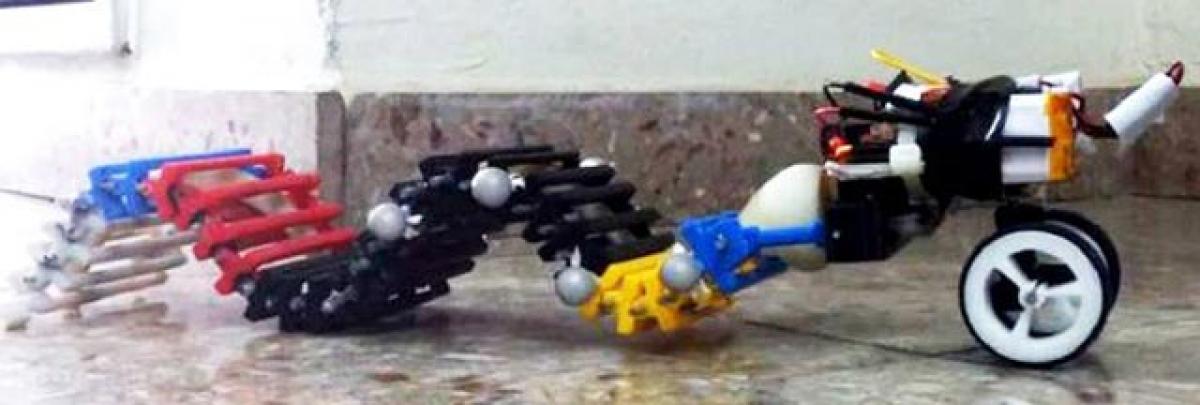Live
- Expose Opposition’s evil propaganda in villages: Seethakka to Cong workers
- MLA Sudhir focuses on amenities at Srikalahasti rly station
- Chittoor police crack down on drunk driving with 963 cases
- Vision document historical, says Keshav
- YSRCP to boycott elections to WUAs
- Farmers led by YSRCP leaders stage protest against graft
- MLA Dhanpal reminds Cong of promise of gold for brides
- Dy CM Pawan hails Swarna Andhra@2047 vision document
- Ensure success of Mathematic Talent exam
- Atchannaidu expresses concern over fall in tomato price
Just In

Researchers have developed a 3D-printed robot that can move forward or backward in a wave-like motion, enabling it to climb over obstacles, swim or crawl through unstable terrain like sand, grass and gravel.
Researchers have developed a 3D-printed robot that can move forward or backward in a wave-like motion, enabling it to climb over obstacles, swim or crawl through unstable terrain like sand, grass and gravel.
"Researchers all over the world have been trying to create a wave movement for 90 years," said one of the researchers David Zarrouk from Ben-Gurion University of the Negev (BGU) in Israel.
"We succeeded by finding a simple, unique solution that enables the robot to be built in different sizes for different purposes. For example, it can be scaled up for search and rescue and maintenance, or miniaturised to a diametre of one centimetre or less to travel within the human body for medical purposes, such as imaging and biopsies of the digestive system," Zarrouk explained.
The first single actuator wave-like robot (SAW) moves much like a worm would in a perpendicular wave. Its minimalistic mechanical design produces an advancing sine wave with a large amplitude, using only a single motor with no internal straight spine, described a paper published in the journal Bioinspiration & Biomimetics.
The robot can crawl through unstable terrain like sand, reaching a top speed of 57 centimetres per second. The robot's innovative wave movement also enables it to climb through tunnels at a rate of eight centimetres per second when touching both sides. A waterproof version can swim at six centimetres per second, the researchers said.
By adding spiny traction enhancers to each link, the team was able to propel the robot 13 per cent faster than its own wave speed. The robot is is easy to manufacture, strong, reliable, and energy efficient, which enables long-distance travel, Zarrouk said. "I believe it will be useful for travelling through the intestine for imaging and biopsies, and for infiltrating problematic, complex security areas, such as tunnels, destroyed buildings and pipes," Zarrouk noted.

© 2024 Hyderabad Media House Limited/The Hans India. All rights reserved. Powered by hocalwire.com







